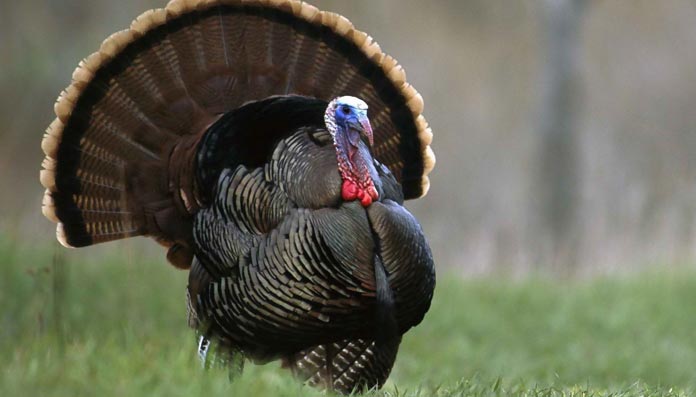Our sanitized story of Thanksgiving was adopted in 1863 by President Abraham Lincoln, to divert attention away from his Emancipation Proclamation, which was causing riots in the North, even though it was meaningless. The story was taken from a short fiction piece written by Sarah Josepha Hale. President Lincoln proclaimed the last Thursday in November as a National Day of Thanksgiving in honor of the feast that never happened. Turkey became the traditional meal because at that time, there was a good supply of turkeys available, and turkeys were preferred over chickens for eating, because chickens were more valuable alive, and laying eggs.
Turkey Trivia – What you Might Not Know
- Wild Turkeys and Domestic Turkeys are completely different birds, except that they all belong to the Pheasant family. Domestic turkeys that you buy in the stores are all of 1 breed, the Broad-Breasted White, which has been selectively bred to produce the most white meat possible. It’s breasts are so large that they can barely walk, cannot fly, and cannot even mate by themselves, and have to be artificially inseminated to breed. They have a bland taste, and somewhat stringy meat. Wild turkeys are made up of 5 species, the Merriam’s, Gould’s, Rio Grande, Eastern and Osceola. They are about half the size of domestic turkeys, are very flavorful, and have great texture.
- Domestic Turkeys can top 30 pounds. Wild Turkeys seldom exceed 20 pounds.
- A wild turkey can fly up to 55 mph, and can run at over 25 mph.
- A wild turkey’s vision is 3 times better than a human’s, covers 270º, and they see colors very well, so that orange vest you wear when hunting is very visible to any wild turkey. Their sense of smell is over 100 times as acute as a humans, and their hearing is 50 times more sensitive. Now you know why you come home empty-handed so often when hunting turkeys.
- A wild Tom turkey’s gobble can be heard over 1 mile away. Male turkeys are Toms. Females are hens.
- Alaska and Hawaii are the only two states in the US without a population of wild turkeys.
- The bald head and wattles of a turkey change color, depending on what emotion the bird is felling. They can be red, white, pink, or blue.
- Turkeys are omnivorous, and will eat grass, grains, plants, insects, small reptiles, and will scavenge if given the opportunity.
- Wild turkeys almost became extinct in the 1930s due to over-hunting and loss of habitat. Luckily, massive conservation efforts were started and today there are over 7 million wild turkeys.
- The average lifespan of a wild turkey is 3 to 5 years. A domestic turkey….a few months, until it is large enough to eat.
- When the new United States was in the process of selecting a National Bird, Ben Franklin lobbied heavily for the Eastern Turkey. He said that since the eagle was a scavenger, the turkey was a more noble bird, and was native to the country. Mr. Franklin may have been a fair biologist and physicist, but he must have flunked biology, because the Bald eagle is not only native to the US, but is unique to it. But, the eagle probably looks better and more ferocious on our National Seal than a turkey would’ve. If I were an Army Ranger, I would hate to be in a unit called the Screaming Turkeys… I don’t see a fighter plane called the F-15 Turkey inspiring a whole lot of fear in our enemies… Can you imagine back in 1969, Neil Armstrong radioing back from the surface of the moon, “The Turkey has landed.”
- June is National Turkey Lover’s Day. It encourages people to eat turkey at other times besides just holidays.
- Wild turkeys are the most hunted bird in America, eclipsing ducks, doves, quail, and even geese.
- The US produces around 250 million domestic turkeys each year, and the average person consumes around 17 pounds of turkey annually.
- A domestic turkey has around 70% white meat and 30% dark meat.
- It takes 28 days to hatch a turkey egg.
- It takes around 30 pounds of feed to produce a 30-pound Tom turkey.
- Wild turkeys sleep in trees. Domestic turkeys cannot get up into trees.
- Only Tom turkeys ‘gobble’. Hens just click and squeak.
- Turkeys evolved over 5 million years ago.
- Native Americans have been raising turkeys as far back as 1000 BC.
- You can tell the sex of turkeys by their spoor. Toms leave a spiral spoor, while hens leave a J-Shaped one.
- An adult turkey has 3500 feathers. The really amazing thing is the fact that someone actually took the time to count the feathers on a turkey.






